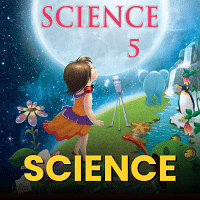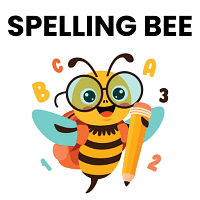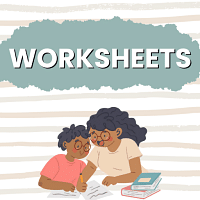Class 5 Exam > Class 5 Questions > Where does our food go, after we put it into ...
Start Learning for Free
Where does our food go, after we put it into the mouth and swallow it?
- a)Liver
- b)Stomach
- c)Small Intestine
- d)Pancreas
Correct answer is option 'B'. Can you explain this answer?
Verified Answer
Where does our food go, after we put it into the mouth and swallow it?...
After you chew and swallow your food, it enters your esophagus. This tube connects your throat to your stomach. A series of muscular contractions, known as peristalsis, pushes your food downward and into your stomach.
 This question is part of UPSC exam. View all Class 5 courses
This question is part of UPSC exam. View all Class 5 courses
Most Upvoted Answer
Where does our food go, after we put it into the mouth and swallow it?...
Overview:
After we put food into our mouth and swallow it, it goes through a series of processes and travels through different organs in our digestive system. One of the main destinations for the food is the stomach.
Explanation:
When we eat food, it goes through the following journey:
1. Mouth:
- The process of digestion starts in the mouth.
- Food is broken down into smaller pieces by chewing and mixed with saliva, which contains enzymes that begin the digestion process.
2. Esophagus:
- After chewing and swallowing, the food travels down the esophagus, which is a tube connecting the mouth to the stomach.
- The muscles in the esophagus contract in a coordinated manner to push the food towards the stomach.
3. Stomach:
- Once the food reaches the stomach, it encounters strong muscular contractions that help to mix and break down the food further.
- The stomach secretes gastric juices, including hydrochloric acid and enzymes, which aid in the digestion of proteins.
- The stomach also serves as a storage organ, holding the food until it is ready to move to the next stage of digestion.
4. Small Intestine:
- After being partially digested in the stomach, the food enters the small intestine.
- The small intestine is the primary site for digestion and absorption of nutrients.
- Here, the food mixes with digestive enzymes from the pancreas and bile from the liver, which help break down fats, carbohydrates, and proteins into smaller molecules.
- The inner lining of the small intestine contains numerous tiny finger-like structures called villi, which increase the surface area for absorption of nutrients into the bloodstream.
5. Large Intestine:
- After the small intestine, any undigested food, water, and waste products move into the large intestine.
- The large intestine absorbs water and electrolytes from the remaining food waste, forming feces.
- The feces are then stored in the rectum until they are eliminated from the body through the anus during a bowel movement.
Conclusion:
After we put food into our mouth and swallow it, it goes through the process of digestion and travels through several organs, including the stomach. The stomach plays a vital role in breaking down the food, mixing it with digestive juices, and storing it until it is ready to move into the small intestine for further digestion and absorption of nutrients.
After we put food into our mouth and swallow it, it goes through a series of processes and travels through different organs in our digestive system. One of the main destinations for the food is the stomach.
Explanation:
When we eat food, it goes through the following journey:
1. Mouth:
- The process of digestion starts in the mouth.
- Food is broken down into smaller pieces by chewing and mixed with saliva, which contains enzymes that begin the digestion process.
2. Esophagus:
- After chewing and swallowing, the food travels down the esophagus, which is a tube connecting the mouth to the stomach.
- The muscles in the esophagus contract in a coordinated manner to push the food towards the stomach.
3. Stomach:
- Once the food reaches the stomach, it encounters strong muscular contractions that help to mix and break down the food further.
- The stomach secretes gastric juices, including hydrochloric acid and enzymes, which aid in the digestion of proteins.
- The stomach also serves as a storage organ, holding the food until it is ready to move to the next stage of digestion.
4. Small Intestine:
- After being partially digested in the stomach, the food enters the small intestine.
- The small intestine is the primary site for digestion and absorption of nutrients.
- Here, the food mixes with digestive enzymes from the pancreas and bile from the liver, which help break down fats, carbohydrates, and proteins into smaller molecules.
- The inner lining of the small intestine contains numerous tiny finger-like structures called villi, which increase the surface area for absorption of nutrients into the bloodstream.
5. Large Intestine:
- After the small intestine, any undigested food, water, and waste products move into the large intestine.
- The large intestine absorbs water and electrolytes from the remaining food waste, forming feces.
- The feces are then stored in the rectum until they are eliminated from the body through the anus during a bowel movement.
Conclusion:
After we put food into our mouth and swallow it, it goes through the process of digestion and travels through several organs, including the stomach. The stomach plays a vital role in breaking down the food, mixing it with digestive juices, and storing it until it is ready to move into the small intestine for further digestion and absorption of nutrients.
Attention Class 5 Students!
To make sure you are not studying endlessly, EduRev has designed Class 5 study material, with Structured Courses, Videos, & Test Series. Plus get personalized analysis, doubt solving and improvement plans to achieve a great score in Class 5.

|
Explore Courses for Class 5 exam
|

|
Similar Class 5 Doubts
Where does our food go, after we put it into the mouth and swallow it?a)Liverb)Stomachc)Small Intestined)PancreasCorrect answer is option 'B'. Can you explain this answer?
Question Description
Where does our food go, after we put it into the mouth and swallow it?a)Liverb)Stomachc)Small Intestined)PancreasCorrect answer is option 'B'. Can you explain this answer? for Class 5 2024 is part of Class 5 preparation. The Question and answers have been prepared according to the Class 5 exam syllabus. Information about Where does our food go, after we put it into the mouth and swallow it?a)Liverb)Stomachc)Small Intestined)PancreasCorrect answer is option 'B'. Can you explain this answer? covers all topics & solutions for Class 5 2024 Exam. Find important definitions, questions, meanings, examples, exercises and tests below for Where does our food go, after we put it into the mouth and swallow it?a)Liverb)Stomachc)Small Intestined)PancreasCorrect answer is option 'B'. Can you explain this answer?.
Where does our food go, after we put it into the mouth and swallow it?a)Liverb)Stomachc)Small Intestined)PancreasCorrect answer is option 'B'. Can you explain this answer? for Class 5 2024 is part of Class 5 preparation. The Question and answers have been prepared according to the Class 5 exam syllabus. Information about Where does our food go, after we put it into the mouth and swallow it?a)Liverb)Stomachc)Small Intestined)PancreasCorrect answer is option 'B'. Can you explain this answer? covers all topics & solutions for Class 5 2024 Exam. Find important definitions, questions, meanings, examples, exercises and tests below for Where does our food go, after we put it into the mouth and swallow it?a)Liverb)Stomachc)Small Intestined)PancreasCorrect answer is option 'B'. Can you explain this answer?.
Solutions for Where does our food go, after we put it into the mouth and swallow it?a)Liverb)Stomachc)Small Intestined)PancreasCorrect answer is option 'B'. Can you explain this answer? in English & in Hindi are available as part of our courses for Class 5.
Download more important topics, notes, lectures and mock test series for Class 5 Exam by signing up for free.
Here you can find the meaning of Where does our food go, after we put it into the mouth and swallow it?a)Liverb)Stomachc)Small Intestined)PancreasCorrect answer is option 'B'. Can you explain this answer? defined & explained in the simplest way possible. Besides giving the explanation of
Where does our food go, after we put it into the mouth and swallow it?a)Liverb)Stomachc)Small Intestined)PancreasCorrect answer is option 'B'. Can you explain this answer?, a detailed solution for Where does our food go, after we put it into the mouth and swallow it?a)Liverb)Stomachc)Small Intestined)PancreasCorrect answer is option 'B'. Can you explain this answer? has been provided alongside types of Where does our food go, after we put it into the mouth and swallow it?a)Liverb)Stomachc)Small Intestined)PancreasCorrect answer is option 'B'. Can you explain this answer? theory, EduRev gives you an
ample number of questions to practice Where does our food go, after we put it into the mouth and swallow it?a)Liverb)Stomachc)Small Intestined)PancreasCorrect answer is option 'B'. Can you explain this answer? tests, examples and also practice Class 5 tests.

|
Explore Courses for Class 5 exam
|

|
Signup for Free!
Signup to see your scores go up within 7 days! Learn & Practice with 1000+ FREE Notes, Videos & Tests.

























